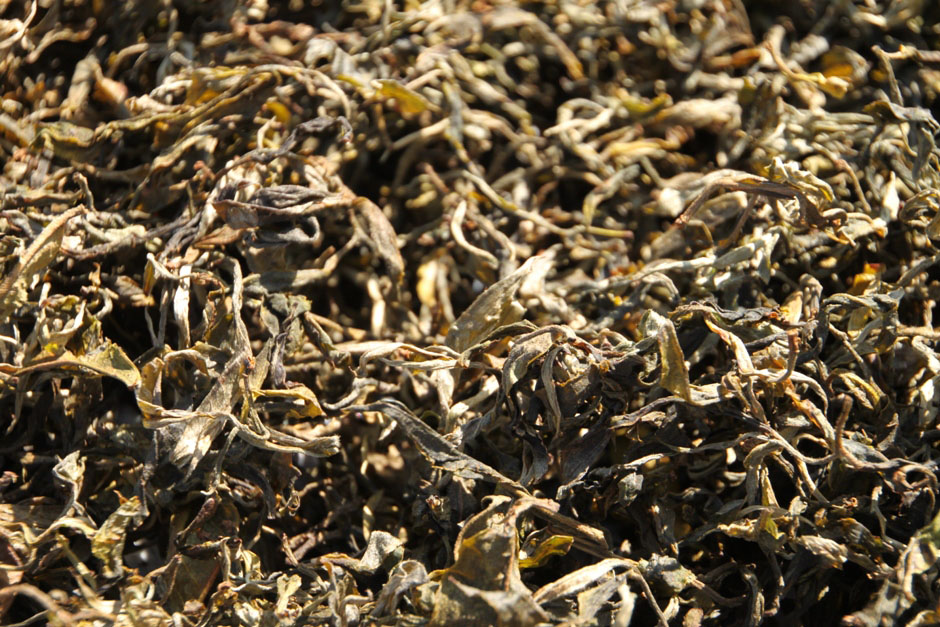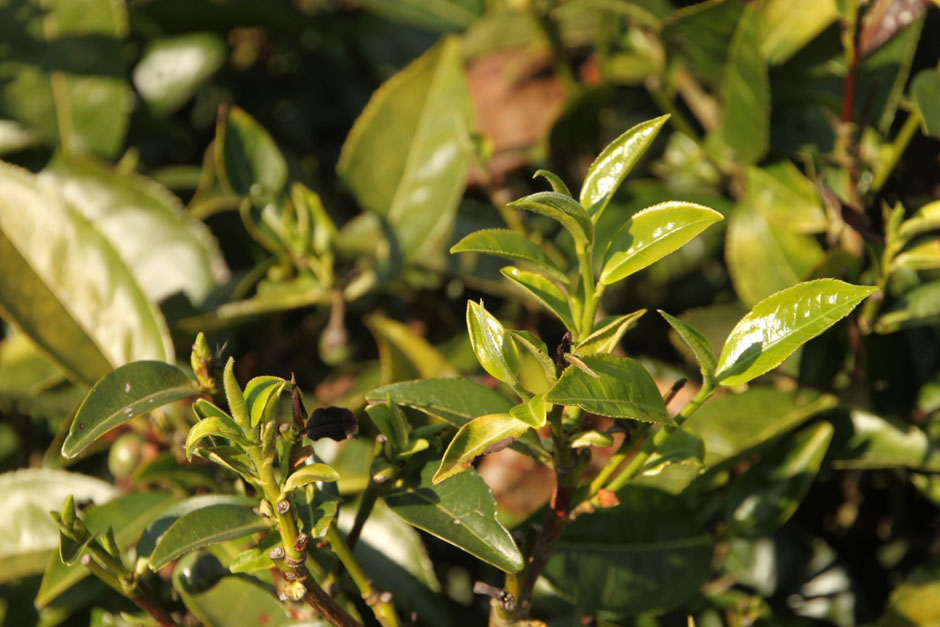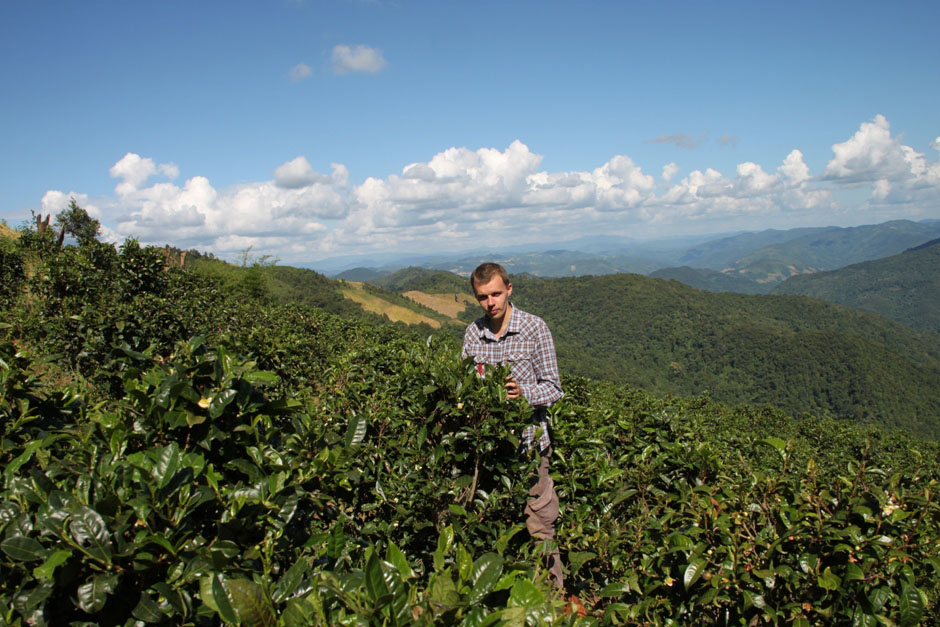

Phongsali is surrounded by mountains and rivers. The climate is warm and pleasant in summer with frequent rain, and fairly cool and foggy in winter with the average morning temperature as low as +12C (54 F). These weather conditions are perfect for growing tea; besides the local government supports the citizens in tea farming. A long time ago there were only about a hundred of old tea trees growing wild in this area but now lots of new tea gardens can be found around here.
The tea garden near Ban Payasi village. Obviously, locals have no tendency to plant tea in perfectly straight rows. Compare to Japan, for example.
Walking in town on a sunny afternoon, you can see here and there lots of bamboo trays filled with tea. Usually, friends and family bring freshly picked tea leaves by motorcycles in the morning, to dry it under the sun. Soon, the fire will be started to warm up a huge wok pan on the top of the oven. The roasting time is only ten-twelve minutes but it is long enough to develop the incredible aroma arising from the roasted tea leaves and spreading through the streets. The secret is to stir rapidly by hand.
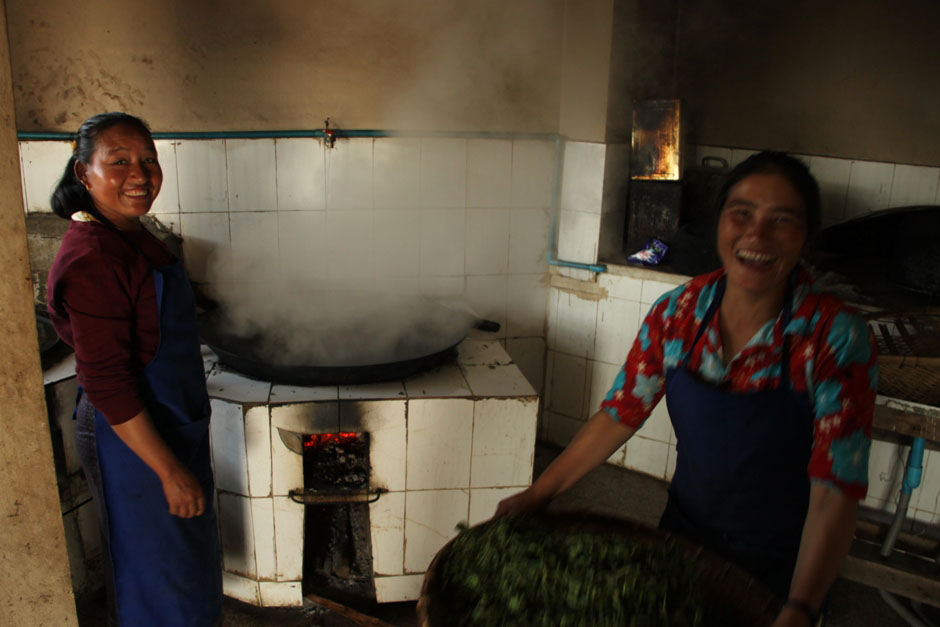
Roasting freshly picked tea leaves. By local custom tea is made mostly by women. Only tea from old trees is made by men. Tea making is similar to the art of cooking in that the best chefs are men!
Roasted leaves are then transferred from the wok pan back onto bamboo trays to be rolled. The process of rolling tea is like kneading dough — tea is rolled into round bales then squeezed, stirred, and rolled again.
This is how it is done in Vipafone. Tea is roasted, squeezed then given a last drying. All of it happens in a friendly and enjoyable atmosphere. For them, making tea is fun!
Twisted tea leaves are then spread in the sun once again for the final drying. By the evening the Sheng Tea is ready (in Chinese this type of tea is called «sun-dried») Quite simple!
This «sun-dried» tea is ready to be consumed! And if it is stored properly, the tea will get even better and more valuable with time, varying considerably in quality.
This method of making tea can suffer from some complications such as wrong time intervals for withering when the freshly picked tea leaves are spread in the open air before roasting. It causes undesired taste and aroma of tea in later steps of the tea making process. Another flaw is unprofessional roasting. Ideally, the temperature of a wok pan must be high at the beginning then be gradually lowered. The last problem is improper storage if moisture gets into stored tea, causing mildew.
.JPG)
When a thick cloud of fog covered the city completely, it is useless to try to dry tea outside.
All bags with made tea, which leaves went through the same process are stored together in one room; however, only some have pleasant aroma, while others just stink unbelievably. Why is that? The same people, same kitchen, and same type of tea, so what is wrong? The answer is simple: the final result depends also on the properties of the tea leaf. The good quality leaves are not easy to mess up.
The custom of drinking tea is common among Laotians but they consume less than nearby areas of China. Most of the home-made tea will be sold to cunning Chinese from Yunnan in April-May. The buyers mix their local tea with «wild» Laos’s tea and then sell it under «Mount Yiwu» trademark.
Of course, there are some people in Laos, too, who appreciate fine quality tea but not many. Usually these people follow the oldest tradition when they make tea. This tradition is to roast tea leaves on a big flat piece of rock with an open-air fire under it. But to witness this process is now a rarity — you have to be really lucky!
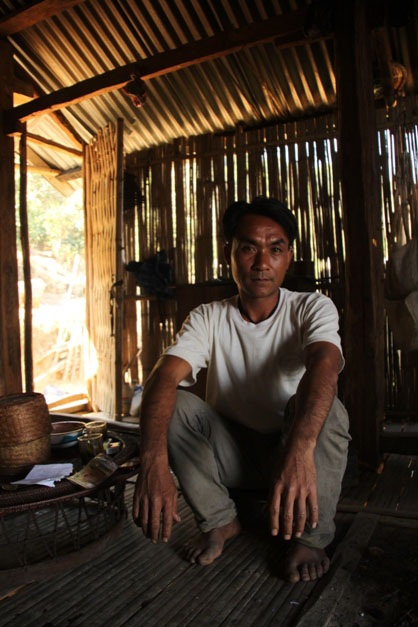
Insay is a tea farmer from Ban Payasi village; his family owns a tea garden with tea trees grown so big that they have to use ladders to harvest the leaves.
By rethinking the whole situation of tea here in Laos, we were inspired and challenged to give it a try in our own. We attempted to start independent tea production by following the traditions, and also using our best knowledge and experience in tea. Because we wanted to create a tasty and healthy tea product that is consistent in quality as well.

